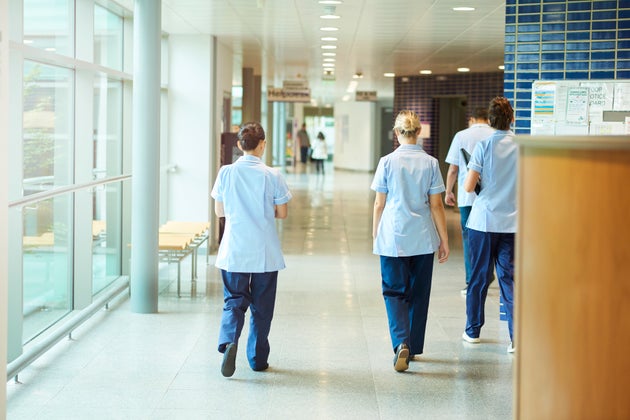A journalist who went to A&E when she was feeling suicidal has hit out at the London hospital after she was sent home with just an advice slip asking: “Are you feeling the strain?”
Emily Reynolds, 26, said she was given the sheet of paper after seeing five health professionals at A&E. The printout, seen by HuffPost UK, recommends a free workshop program to learn “relaxation techniques”, as well as the phone number for a mental health crisis service.
But Reynolds, who was diagnosed with bipolar disorder four years ago, claims she had already called the helpline earlier that day, and told them she felt suicidal and unable to cope.
Counsellors on the helpline advised her to go to A&E, where she claims she was seen by a doctor, nurse, psychiatric nurse and liaison team consisting of a mental health nurse and a trainee.
“After that assessment, they decided I wasn’t a high enough risk to be taken as an inpatient so I was immediately discharged from A&E,” she told HuffPost UK.

Reynolds said the experience left her feeling “hopeless”. The writer was able to secure an appointment to see a crisis team in a month’s time. “It seems ludicrous that a ‘crisis’ appointment would be a month away,” she said.
“What I find really distressing is that people who can’t advocate for themselves are being put through these experiences… They are far more vulnerable than me and they are being failed.”
Replying to a thread on Twitter posted by Reynolds, which went viral, one person said after being admitted to A&E following attempted suicide, they waited 24 hours to see a psychiatrist for an appointment that lasted just 30 minutes.
“He handed me a piece of paper with crisis numbers,” the Twitter user wrote. “I was given no referral to a psychiatric unit despite telling them I was still at risk. I got a phone number. That was it.”
Others shared similar stories of being given printouts or told to read self-help books.
According to NHS guidance, a mental health crisis should be taken as seriously as a medical emergency. People are advised to go to A&E directly if they need immediate help and are worried about their own safety. An example given is if a person is close to acting on suicidal thoughts or has seriously harmed themselves.
Once at A&E, a team should tend to their immediate physical and mental health need, guidance states. Many hospitals now have a liaison psychiatry team designed to bridge the gap between physical and mental healthcare.
If this service is not available, the guidance says the A&E team should contact the local on-call mental health services, such as the crisis resolution and home treatment teams (CRHTs), which should assess the person, decide on the best course of care, and determine whether they can go home or need to be admitted to hospital.

In 2015-16 there were 165,000 people who presented at A&E with psychiatric conditions, NHS Digital data shows. This rose to 175,000 people in 2016-17.
A Care Quality Commission review from 2015 found just 14% of people felt they were provided with the right response when in mental health crisis. In the same report it says around 5% of all A&E attendances are recorded as relating to mental health problems.
Dr Fin Larkin, West London Mental Health NHS Trust’s clinical director for urgent care services, said the trust has a psychiatric liaison service which operates in all of the emergency departments in Ealing, Hammersmith and Fulham and Hounslow, “providing on-site support to doctors and nurses treating patients in the acute hospitals.”
“In addition, from this week, our crisis assessment and treatment teams, which treats patients in the community, has begun to operate 24/7. This means that many patients can now be treated closer to home and avoid a trip to A&E.”
Vicki Nash, Head of Policy and Campaigns at mental health charity Mind, said it’s common for people in a mental health crisis to find themselves in A&E, especially if they have self-harmed, or contemplated or attempted suicide.
“If someone has harmed themselves, A&E is the best place to get attention for their physical injuries,” she said. “In addition, it’s really important their mental health needs are addressed too, which are every bit as important as the immediate physical concerns.
“As well as A&E, we need to see alternatives available – such as crisis houses and cafes – which provide a safe space for people in crisis.”
NHS England told HuffPost UK that while it can’t comment on individual cases, it is on track to deliver 24-hour mental health liaison, meaning by 2020/21 all hospitals will have teams in place in emergency departments and in-patient wards, with at least half running 24 hours a day, seven days a week.
Useful websites and helplines:
- Mind, open Monday to Friday, 9am-6pm on 0300 123 3393
- Samaritans offers a listening service which is open 24 hours a day, on 116 123 (UK and ROI – this number is FREE to call and will not appear on your phone bill.)
- The Mix is a free support service for people under 25. Call 0808 808 4994 or email: help@themix.org.uk





